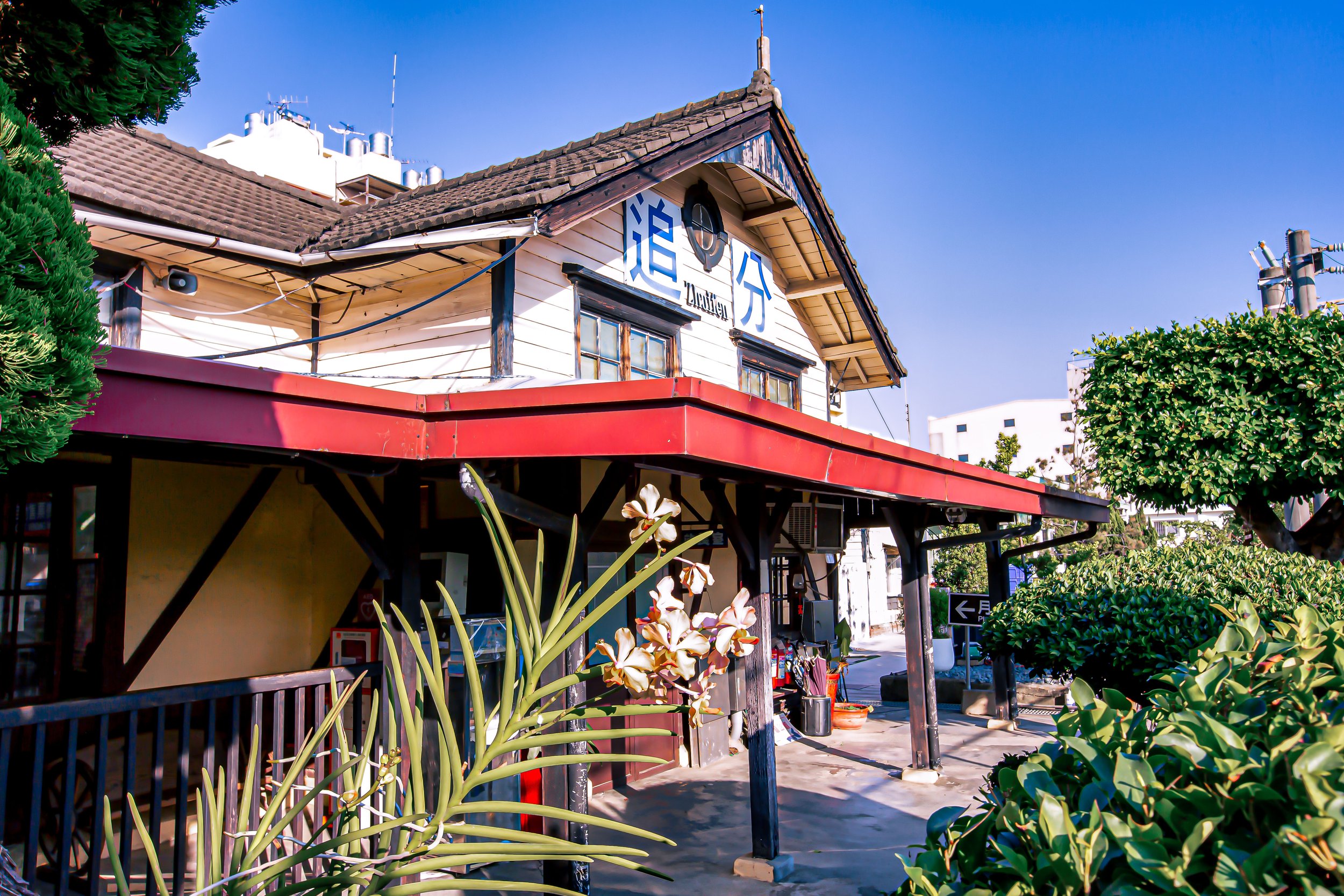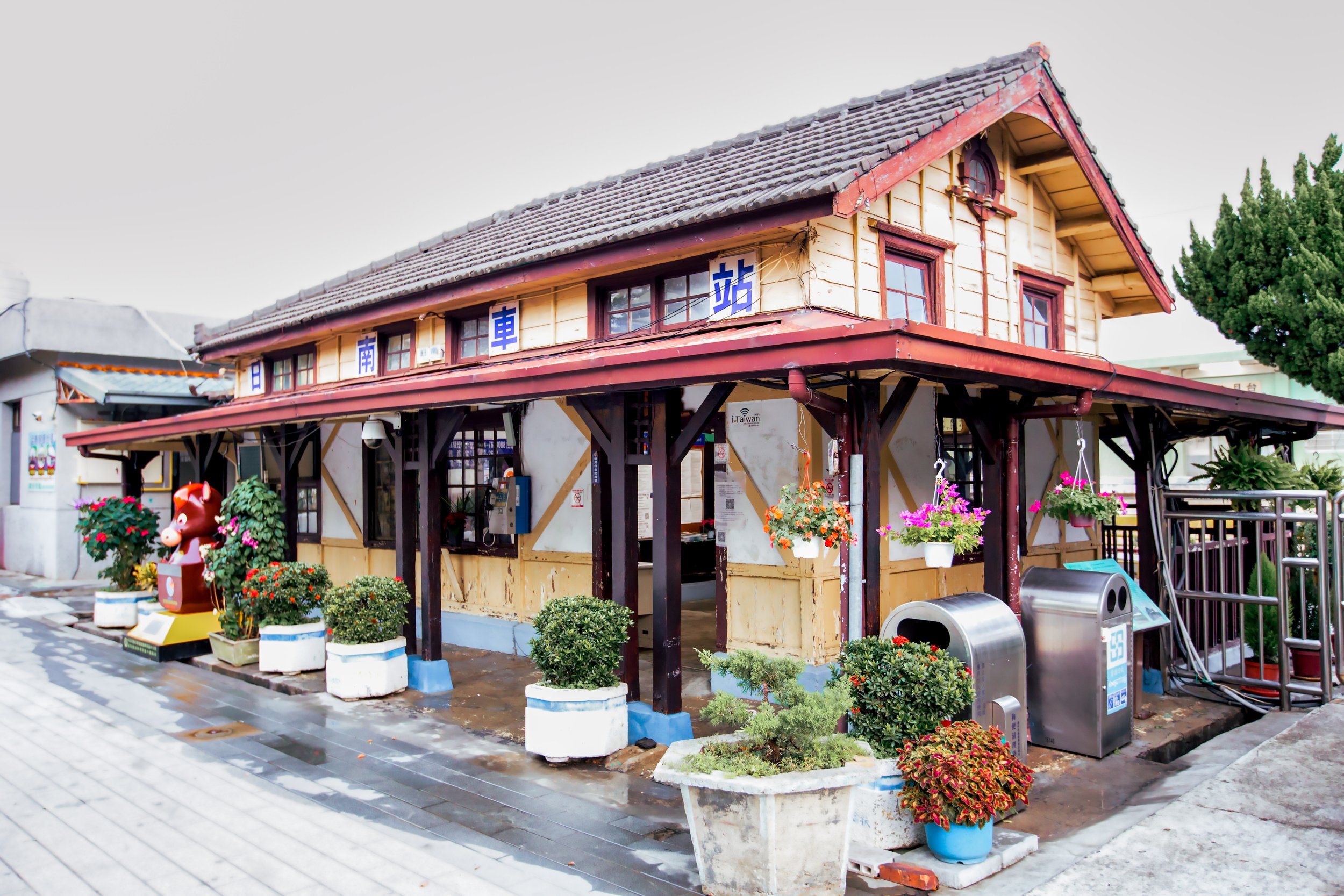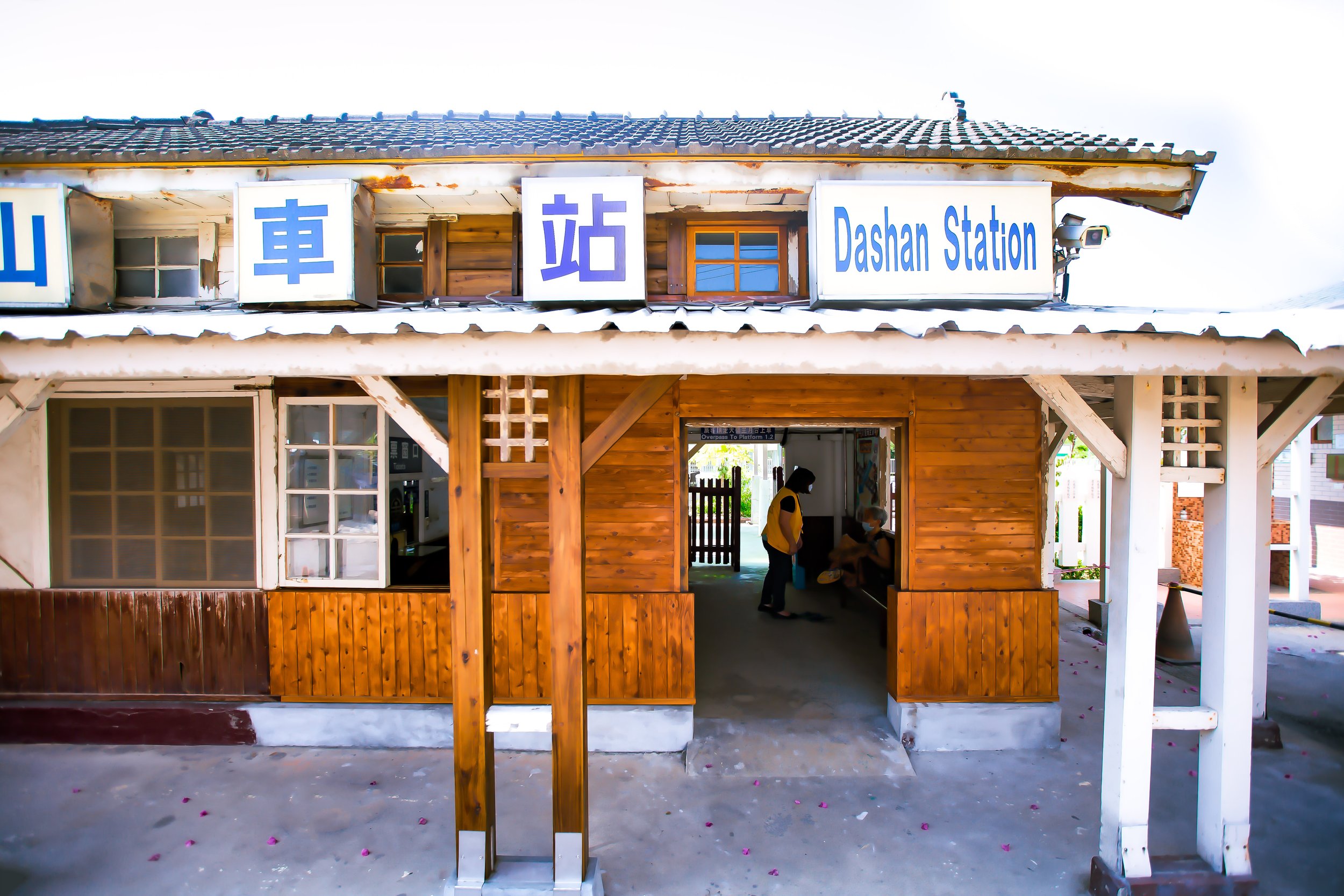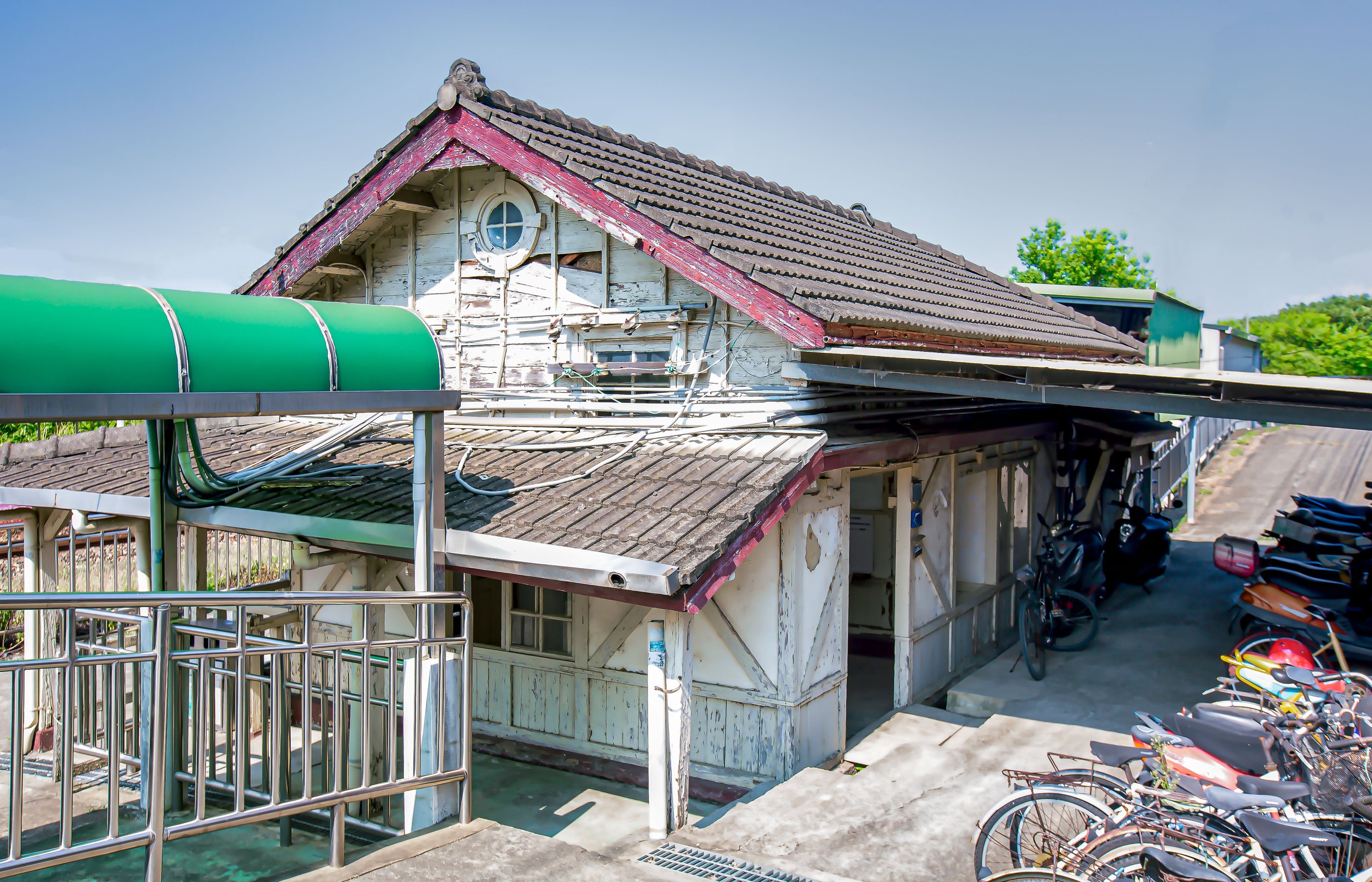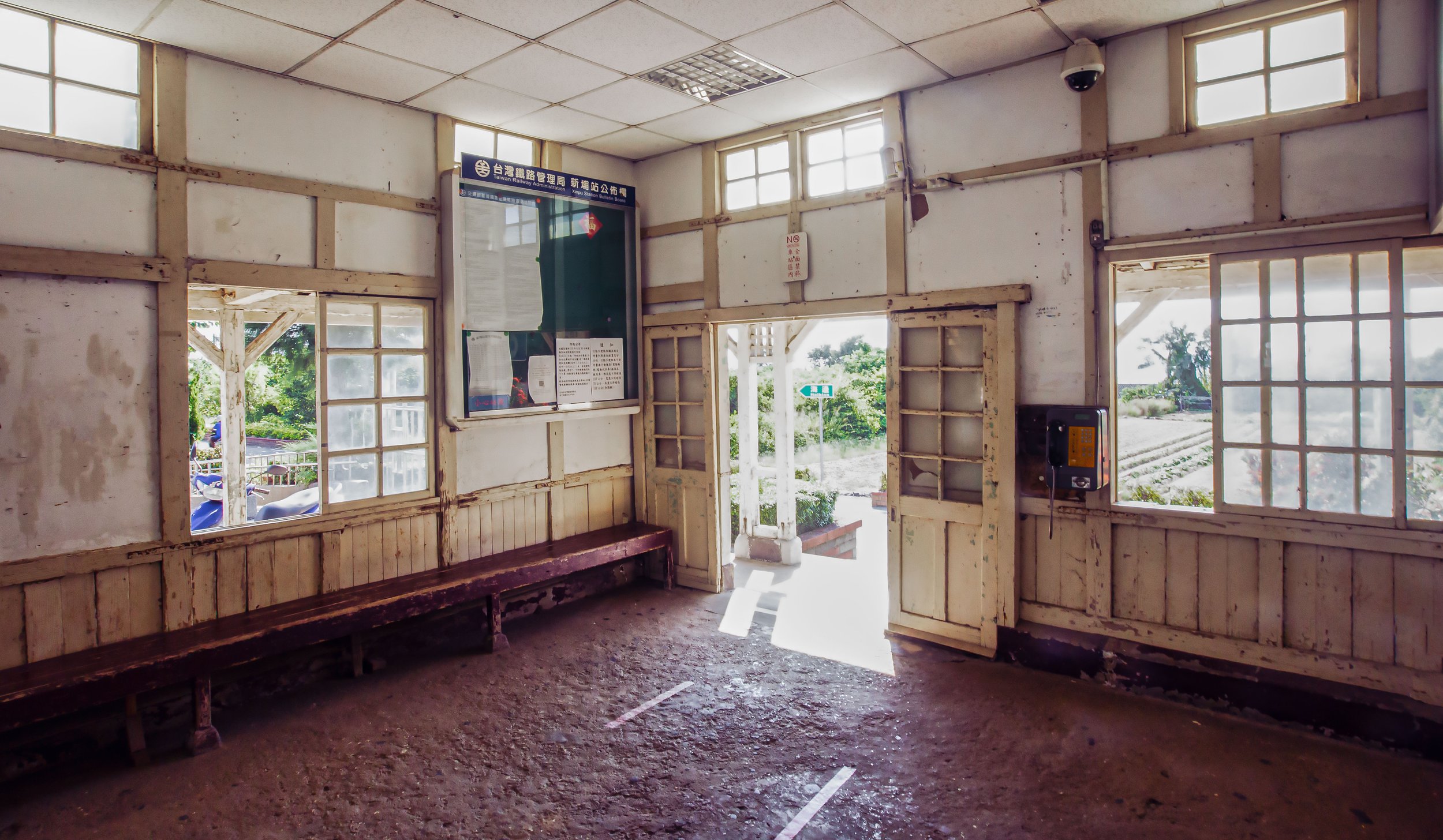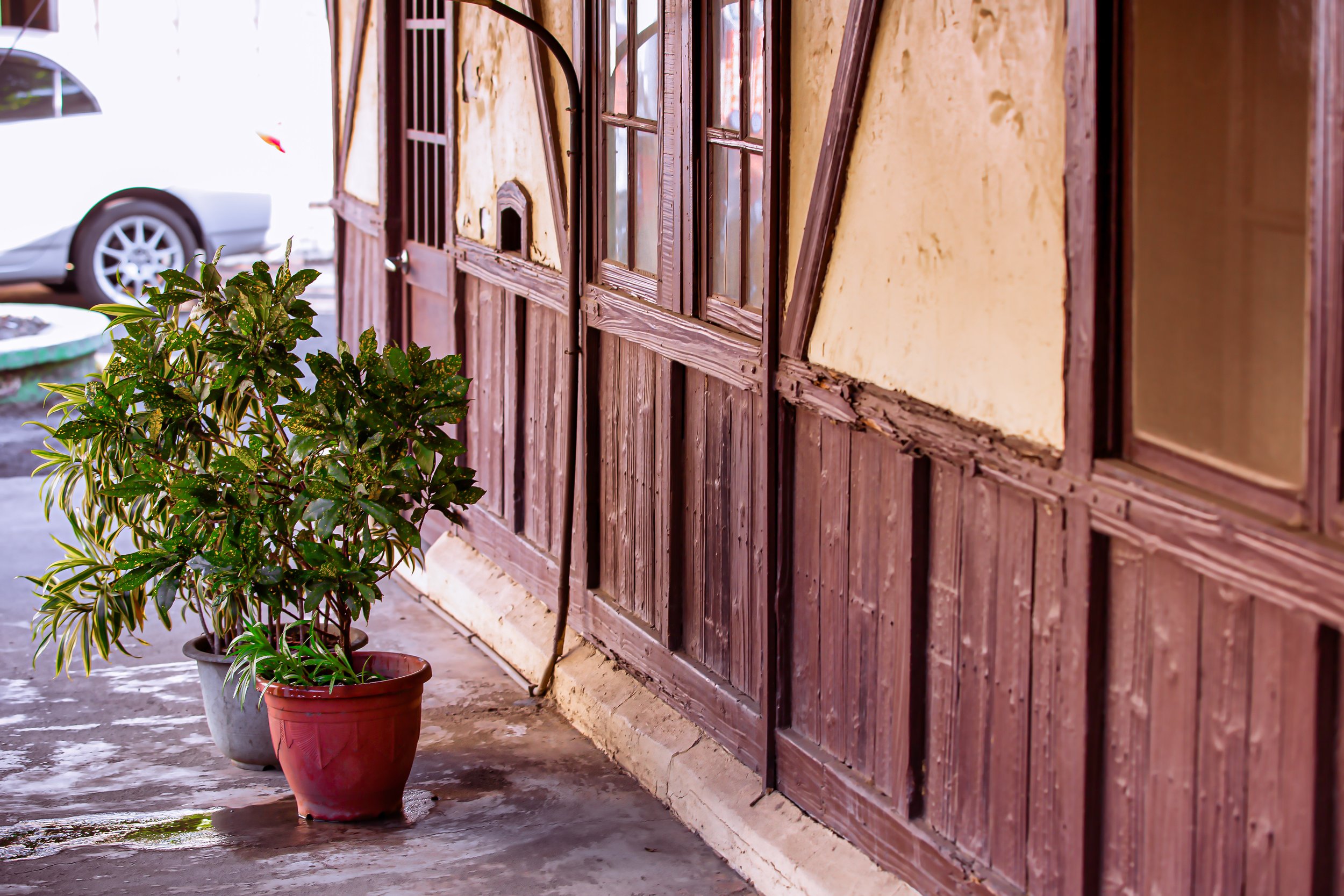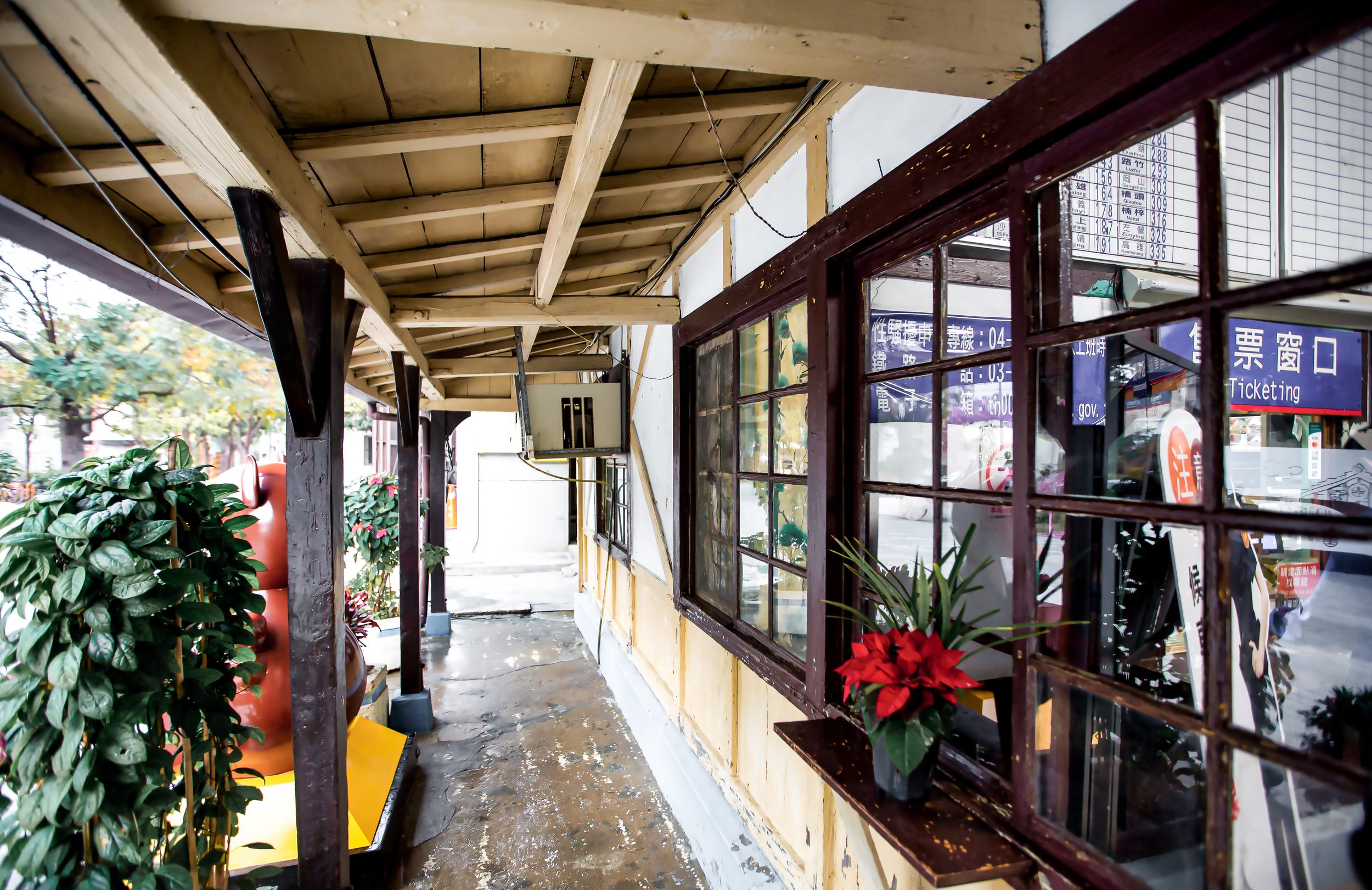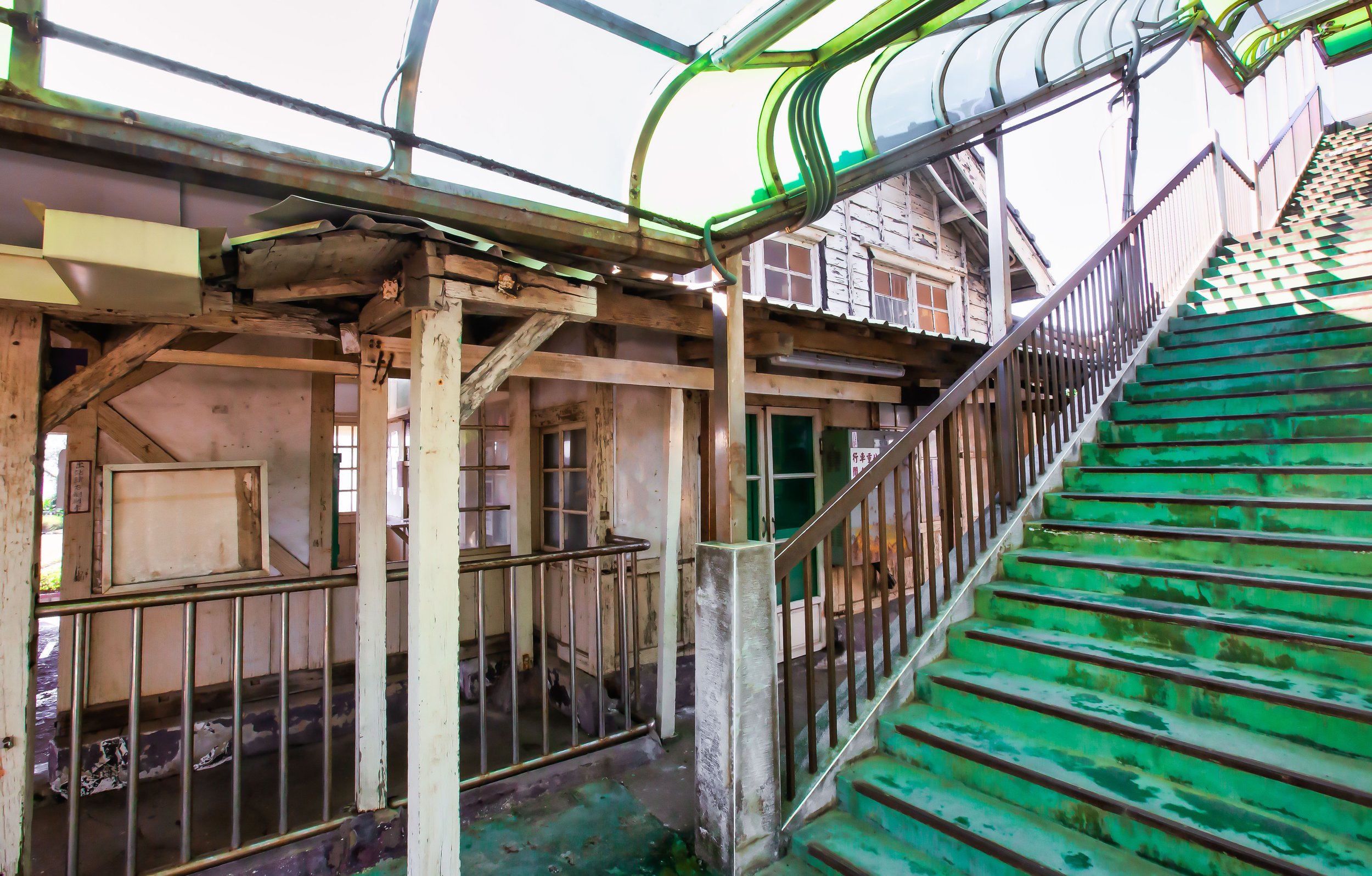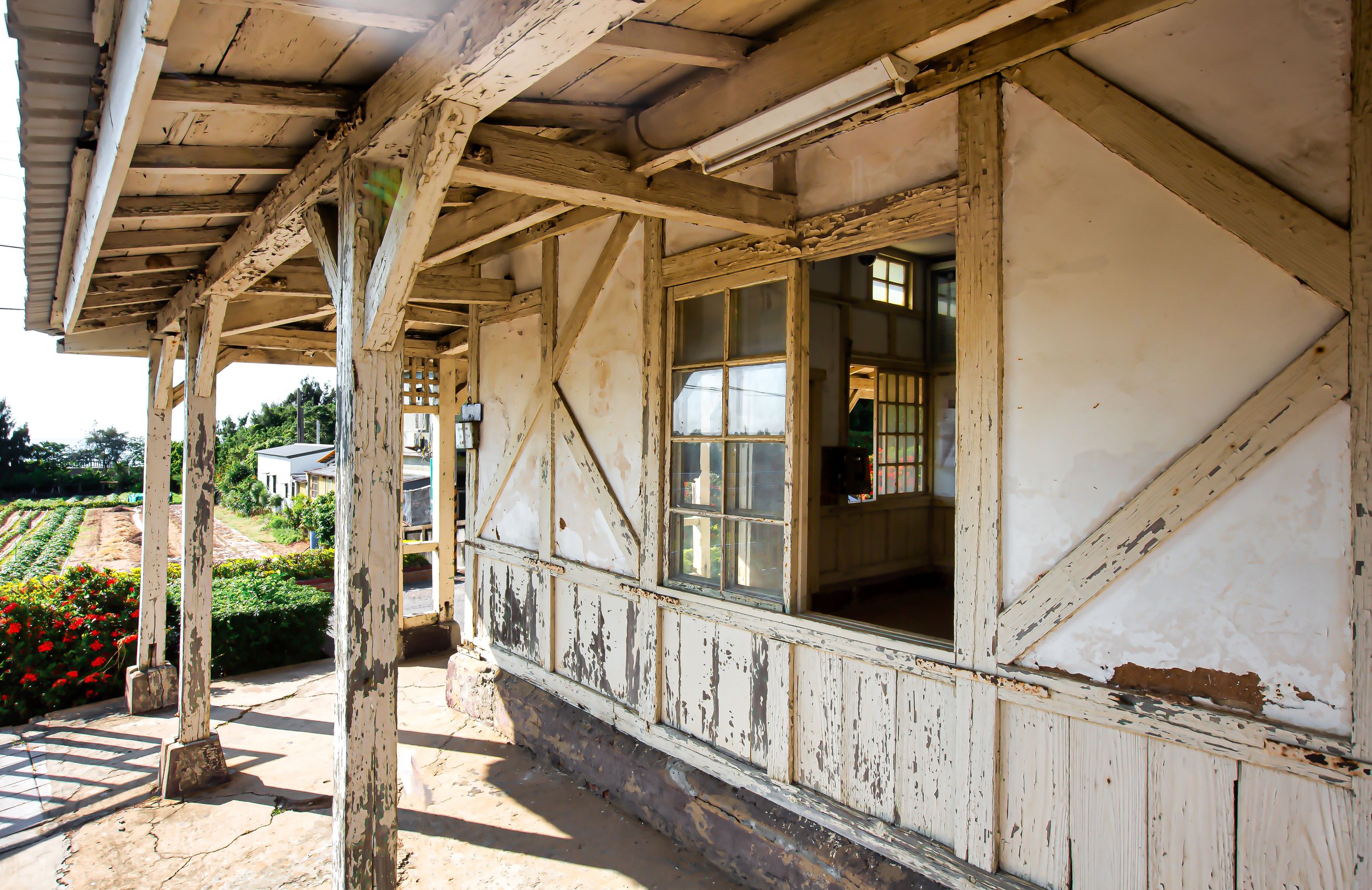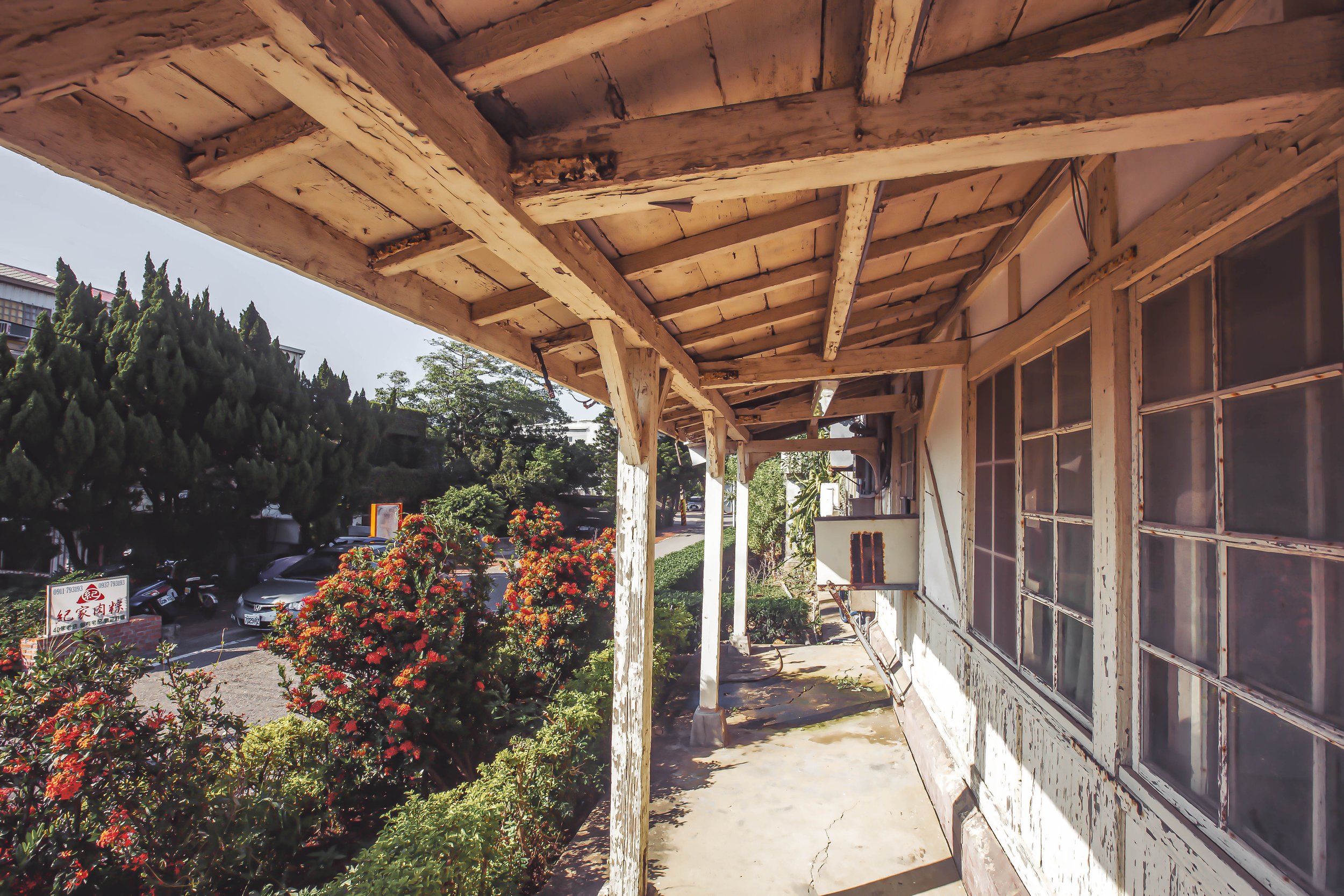I’ve spent a considerable amount of time as of late making my way up and down Taiwan’s Western Coast Railway visiting a handful of historic railway stations, taking photos, and then researching and writing about them. Many of you might wonder why I spend so much of my time visiting a bunch of old train stations, but if you’ve read any of my articles about them, you probably have your answer.
The reason I’ve written about a select group of them is because they’re going to be celebrating their centennial year of operation this year (2022), and with so little information about them available in English, I figured it was a good time to tell their story. Even though I realize that a bunch of one hundred year old train stations isn’t all that exciting for most people, it is a tremendously rare thing for buildings of this nature to have lasted so long in Taiwan, and even rarer to find them still in operation today.
In many ways, Taiwan’s rapid modern development has been great for the people of this beautiful country, but for all of the pros, there are obviously going to be some cons; One of the unfortunate aspects of all of Taiwan’s growth over the last few decades is that much of the history of this beautiful island has been bulldozed in order to make way for modernity. If I were to focus only on the topic at hand, there were originally sixteen of these railway stations along the Coastal Railway Branch. Today, we celebrate the five that remain, but its important to keep in mind that seventy percent of them have already been lost to history.
Of course, in some cases the rapid population growth of communities around the country has necessitated such actions with these smaller stations unable to handle with the amount of passengers passing through on a daily basis, but its still a shame that so many of these important pieces of Taiwan’s history have disappeared over the years.
Fortunately, the five remaining stations that I’m going to briefly introduce below have been designated as protected heritage buildings, which should help to ensure that they will continue to exist for quite some time.
Known locally among railway aficionados as the “Coastal Railway Five Treasures” (海鮮五寶), each of these wooden Japanese-era railway stations date back to 1922 and have been fortunate to last as long as they have mostly because they serve small communities where there was never really a huge growth in population.
That being said, even though they continue to remain in operation today, they are also considered by many as living museums given that they do an amazing job of putting local history on display.
To tell their story, I will first have to introduce a bit about the history of the Coastal Railway where they’re located, and then I’ll follow by providing a brief introduction to each of the stations with links to their individual articles and a map where you’ll be able to find them.
If you have any interest in Taiwan’s history, the Japanese-era, or the railway, it’s a pretty good year to take a bit of time to visit one, two or all of these beautiful train stations.
The Coastal Railway (海岸線 / かいがんせん)
The history of the railway in Taiwan dates back as far as 1891 (光緒17), when the last Qing governor, Liu Mingchuan (劉銘傳), attempted to have a route stretching from Keelung (基隆) to Hsinchu (新竹) constructed. The construction of the railway however came at too high of a cost, given that the Qing rulers cared very little about what was happening in Taiwan as well as the fact that they were contending with war (and revolution), so plans to have it extended any further were put on hold.
A few short years later in 1895 (明治28), the Japanese took control of Taiwan, and brought with them a team of skilled western-educated engineers tasked with developing proposals to have the already established railway repaired as well as to come up with suggestions for extending it all the way to the south and beyond.
The Jūkan Tetsudō Project (縱貫鐵道 / ゅうかんてつどう), otherwise known as the ‘Taiwan Trunk Railway Project’ sought to have the railroad pass through each of Taiwan’s established settlements, including Kirin (基隆), Taihoku (臺北), Shinchiku (新竹), Taichu (臺中), Tainan (臺南) and Takao (高雄).
Amazingly, the more than four-hundred kilometer railway was completed in 1908 (明治41), and connected the north to the south with a transportation route for the first time ever. Taking just over a decade to complete, the railway would become instrumental in changing the landscape of Taiwan’s modern development, but was ultimately the key to the colonial regime’s master plan of ensuring that Taiwan’s precious natural resources would be able to be processed efficiently and sent back to Japan.
Once completed, the Railway Department of the Governor General of Taiwan (台灣總督府交通局鐵道部) set its sights on constructing public and private branch lines across the island, as well as expanding the railway network with a line that spanned the entire eastern coast.
Note: Privatized Branch Lines refer to those used by companies engaged in the extraction or production of commodities such as timber, sugarcane, tobacco, coal, gold, etc.
However, after almost a decade of service, unforeseen circumstances in central Taiwan necessitated changes in the way that the western railway operated with issues arising due to typhoon and earthquake damage. More specifically, the Western Trunk railway in southern Miaoli had to pass through mountains and required climbing up a steep incline in sections before eventually crossing bridges across the Da’an (大安溪) and Da’jia Rivers (大甲溪). Due to these geographic limitations, and flaws in the original design, issues caused by natural disasters created a tremendous amount of traffic congestion, and periodic service outages when the railway and the bridges had to be repaired or rebuilt.
Link: Long-Teng Bridge (龍騰斷橋)
To solve the problem of passenger and freight congestion, the team of railway engineers came up with a solution, known as the “Kaigan-sen” (かいがんせん / 海岸線), or the Coastal Railway Branch Line.
With construction of the branch line planned between Chikunangai (ちくなんがい / 竹南街) and Shoka (しょうかちょう / 彰化廳), or what we refer to today as Zhunan (竹南) and Changhua (彰化), the line would divert from the already existing railway and follow a route closer to the coast where the mountains could be avoided.
Link: Western Trunk Line | 縱貫線 (Wiki)
These plans however met with consternation from residents of Taichung who considered the Coastal Railway a dagger to the heart of the economic development and growth of the city. They figured that with the Taichung Port (located on the opposite side of the mountains) processing most of the freight coming from central Taiwan, the city would become a ghost town as the new line would shift development to the coastal side of the mountains
In spite of the protests taking place in Taichung, Governor General Akashi Motojirō (明石 元二郎/あかしもとじろう), who is remembered today as one of the most consequential governors of the Japanese era (thanks to his significant contributions to the economy and infrastructure development projects), held steadfast and made sure that construction on the Coastal Railway came to fruition.
Note: Even though Governor General Akashi Motojiro held his post for just over a year before he fell ill and died, he is credited with the creation of the the Taiwan Power Company (臺灣電力株式會社), the massive Chianan Irrigation System (嘉南大圳), the Sun Moon Lake Hydroelectric Power Plant, and of course the Coastal Railway.
The Governor’s foresight and planning for the future helped to ensure that the island could continue its rapid development, and he used his political influence to ensure that funding was made available from the Japanese government back home.
Link: Akashi Motojiro | 明石元二郎 (Wiki)
Construction on the ninety kilometer Coastal Line started in 1919, and amazingly was completed just a few short years later in 1922 (大正11). Servicing sixteen stations, all of which (as I mentioned above) remain in service today.
What many people are unaware of though is that within a year of the project starting, the first section, known as the ‘Oda Branch Line’ (王田支線) between Oda Station (王田驛) and Kiyomizu Station (清水驛) in southern Taichung opened for service on December 25th, 1920 (大正10年). In today’s terms, the branch line essentially started at Chenggong Station (成功車站), and curved north with a final stop at Qingshui Station (清水車站), where freight could be more efficiently transported to Taichung Port.
To this day, the opening of the Oda Branch Line is interpreted by many as a method of appeasing the people of Taichung. who were weary of the Coastal Branch, but quickly took to the new line as it provided a means of visiting the nearby beach on the weekend. Similarly, it was also seen as a practical move to ensure that freight could be transported to the Taichung port on the western coast as soon as possible.
It would take another two years for the rest of the Coastal Line from Chikunan (竹南 / ちくなんぐん) to Shoka (彰化 / しょうかぐん) to be completed, with the official opening ceremonies taking place on October 11th, 1922 (大正12年) at Tsū-shou Station (通霄驛) in southern Miaoli.
Fortunately for the residents of Taichung, the economic disaster that was predicted never took place, and the city continued to grow thanks to the new line - Even better, the Coastal Railway connected communities in Miaoli and Taichung that had yet to have access to the railway, allowing them to grow as well as ensuring that their own agricultural products would be able to be shipped around the island, as well as being exported back to Japan, providing a tremendous economic opportunity for them.
This was especially true when it came to agricultural products such as watermelons from northern Miaoli, and the ‘Emperors Rice’ cultivated in southern Miaoli. That being said, there was also a considerable amount of coal, camphor, clay, bricks and other products originating from the sixteen stations along the railway.
The sixteen stations along the Coastal Railway, including the two termini stations are as follows:
(Japanese-era romanization / kanji / hiragana / current name)
Chikunan Station (竹南驛/ちくなんえき) / Zhunan (竹南車站)
Tanbunmizūmi Station (談文湖駅 / だんぶんみずうみえき) / Tanwen (談文車站)
Oyamagashi Station (大山腳驛 / おうやま あしえき) / Dashan (大山車站)
Kōryū Station (後龍驛/こうりゅうえき) / Houlong (後龍車站)
Koshiryo Station (公司寮驛 /こうしりやう) / Longgang (龍港車站)
Hakushaton Station (白沙屯驛/はくしゃとんえき) / Baishatun (白沙屯車站)
Shin-ho Station (新埔驛 / しんほえき) / Xinpu (新埔車站)
Tsū-shou Station (通霄驛 / つうしょうえき) / Tongxiao (通宵車站)
Enri Station (苑裡驛 / えんりえき) / Yuanli (苑裡車站)
Nichinan Station (日南驛 / にちなんえき) / Rinan (日南車站)
Taikō Station (大甲驛/たいこうえき) / Dajia (大甲車站)
Kōnan Station (甲南驛/こうなんえき) / Taichung Port (台中港車站)
Kiyomizu Station (清水驛 / きよみずえき) / Qingshui (清水車站)
Sharoku Station (沙鹿驛/しゃろくえき) / Shalu (沙鹿車站)
Tatsui Station (龍井驛/たついえき) / Longjing (龍井車站)
Daito Station (大肚驛 / だいとえき) / Dadu (大肚車站)
Oiwake Station (追分驛 / おいわけえき) / Zhuifen (追分車站)
Shōka Station (彰化驛/しょうかえき) / Changhua (彰化車站)
Interestingly, when the Japanese-era came to an end in 1945, and the Chinese Nationalists took control of Taiwan, the vast majority of the stations maintained the same names, save for a pronunciation change from Japanese to Mandarin. The only stations that went through a name change were the fifth station, Koshiryo Station (公司寮驛), which was changed to Longgang Station (龍港車站) and the twelfth station, Kōnan Station (甲南驛, which was changed to Taichung Port Station (台中港車站).
In the first case, the name change was a bit strange given that ‘Gongsiliao Fishing Harbor’ (後龍公司寮漁港), a short walk from the station uses the Mandarin pronunciation of the Japanese-era name.
The name “Longgang” is a abbreviation of ‘Houlong Fishery Harbor' (後龍漁港), which makes sense.
In the latter case, I don’t see much issue with the name change as the station is used primary for those wanting to reach the Port of Taichung, although the freight services that were once the bread and butter of the station have pretty much dried up as the Port of Taichung has grown and modernized.
Over the past century, the Coastal Railway has remained an important route for passenger service and transporting freight, however when the Mountain Line (山線) was widened into a dual-track system, the amount of trains traveling along the line gradually reduced. These days, the Coastal Railway is most frequently serviced by Local Commuter Trains (區間車) that stop at each station along the route.
Like the Mountain Line however, the Coastal Railway has also gone through a similar period of modernization, including the widening of the tracks into a dual-track system, allowing more trains to travel back and forth as well as the electrification of the entire network.
Link: Qiding Railway Tunnels
Express trains are now able to their way through the Coastal Railway, but they only stop at larger stations such as Zhunan, Houlong, Tongxiao, Yuanli, Dajia, Qingshui, Shalu and Changhua.
Admittedly, when traveling or returning home, I’m always excited when I discover that my ticket displays that my train will travel along the coastal route, which is the more scenic of the two lines. I’m sure for many locals the feeling is mutual as you really get to enjoy Taiwan’s beauty along the route.
Unfortunately as the railway has modernized over the past century, so have many of the stations along the line, which have been completely rebuilt, replacing the original stations constructed in the 1920s.
Today, only a handful of stations constructed during the Japanese-era remain in operation, known as the “Coastal Railway Five Treasures” (海線五寶), these historic stations (as well as the coastal railway itself) will celebrate their one-hundred year anniversary this year (2022).
Fortunately, as I mentioned earlier, now that they’ve all been designated as Protected Historic Properties by either the Taichung City Government or the Miaoli County Government, they will be preserved for future generations to enjoy - and will hopefully also remain in operation for quite some time.
Below, I’ll briefly introduce each of those five stations and provide links to their individual articles for you to learn more about them.
Coastal Railway Five Treasures (海鮮五寶)
Known locally as the ‘Coastal Railway Five Treasures’ these five railway stations along the Coastal Railway between Zhunan and Changhua are historically significant for quite a few reasons, but most importantly are part of a select few stations around Taiwan that have remained in operation for the past one hundred years.
Writing this article, I may be accused of political bias as there is a bit of contention with regard to the proper nickname used to describe the stations.
When most people talk about them, its natural to refer to them as the “Coastal Railway Five Treasures”, but if you’re from the ‘sovereign nation’ of Miaoli-kuo (苗栗國), you’d probably prefer to refer to use the term “Miaoli Three Treasures” (苗栗三寶), completely disregarding the two stations located in Taichung.
The notion that Miaoli is a country of its own is an interesting one, and I’m sure someone could (or probably already has) write an entire thesis on this running joke and how it originated. What I will say is that in the Chinese language, the term Three Treasures (三寶) is a much more auspicious and meaningful number than five, so linguistically it has more sway.
Note: “Three Treasures” (三寶) linguistically refers to “the Buddha”, “the Dharma”, and “the Sangha” (佛寶, 法寶, 僧寶) in Buddhism, also known as the “Three Jewels” or the “Three Roots” and is a term that has significant meaning throughout Asia. That being said, the term “三寶” (sān bǎo) has taken on a number of meanings ranging from Hong Kong style of bento box that features three kinds of meat (三寶飯), or an idiot driving on the road (馬路三寶), among others.
But if you’re not from Miaoli, you should probably include the two stations in Taichung, because they deserve the same amount of respect!
All five of the so-called ‘treasures’ were (more or less) constructed with the exact same architectural design, although they may appear slightly different today, due to their age or modifications that may have taken place over the past century. One might argue that if you’ve seen one, you’ve seen them all, but that would be a bit misguided as there are some pretty important architectural differences found within the stations that you’ll be able to enjoy if you visit each of them. Similarly, the area that surrounds each of the stations has grown over the past century, so while exploring you’ll be able to get a feel of what the area was like a hundred years ago.
For railway enthusiasts, these stations are pretty important attractions, but for the rest of us, only a few of them might be attractive tourist destinations. Nevertheless, if you find yourself in the area, I highly recommend stopping by to check them out.
So, without further adieu, let me briefly introduce each of the Five Treasure:
Tanwen Railway Station (談文車站)
Original name: Tanbunmizūmi Station (談文湖駅 / だんぶんみずうみえき)
Current name: Tanwen Station (談文車站)
Opened: October 11th, 1922
Traveling south of Hsinchu, Tanwen Station is the first of the five treasures that you’ll come across. The station is located in a strange spot just off of the coastal highway in Miaoli’s Zaoqiao Township (造橋鄉). The station is considered to be in the worst shape of the five treasures, but it is arguably also one of the most beautiful as it maintains its century-old appearance, and is most often a pretty quiet place to visit with only tourists visiting at various points throughout the week.
Address: #29 Ren-ai Road, Zaoqiao Township (苗栗縣造橋鄉談文村仁愛路29號)
GPS: 24.656440 120.858330
Dashan Railway Station (大山車站)
Original name: Oyamagashi Station (大山腳驛 / おうやま あしえき)
Current name: Dashan Station (大山車站)
Opened: October 11th, 1922
Traveling south past Tanwen Station, the next stop along the Coastal Railway is Dashan Station, one of the best preserved of the five treasures. Dashan is located within a small coastal community in Miaoli’s Houlong township (後龍鎮) with views of the coast within sight of the platform.
The community near the station is pretty quiet, like the station itself, but don’t let that fool you, Dashan Station was once an extremely important stop along the railway as it was where they’d load copious amounts of delicious watermelons onto the trains bound for port in Taichung.
Address: #180 Mingshan Road. Houlong Township (苗栗縣後龍鎮大山里明山路180號)
GPS: 24.645670, 120.803770
Xinpu Railway Station (新埔車站)
Original name: Shin-ho Station (新埔驛 / しんほえき)
Current name: Xinpu Station (新埔車站)
Opened: October 11th, 1922
The sixth station along the coastal railway, Xinpu Station is probably the least busiest of the bunch as it serves a very small community. It’s also geographically the closest station to the coast on the western railway. The station remains in pretty good shape, but the space around it is quite cramped due to a lack of space and the widening of the railway into a dual-track system.
The area near the station these days is home to a pretty popular bicycling route that follows the coast of Miaoli and Hsinchu. Most of the tourism these days involves people getting off the train with their bicycles and heading back up north on a bike ride.
Address: #57, Hsinpu Village. Tongxiao Township (苗栗縣通霄鎮新埔里新埔57號)
GPS: 24.539850, 120.700350
Rinan Railway Station (日南車站)
Original name: Nichinan Station (日南驛 / にちなんえき)
Current name: Rinan Station (日南車站)
Opened: October 30th, 1922
Rinan Station is the ninth station along the line, and the first of the five treasures in Taichung. Located in the city’s Dajia District (大甲區), famed for its giant Mazu Temple, the station and the area around it has received a bit of attention over the years, allowing it to remain in pretty good shape.
The community that surrounds the station has similarly grown into a relatively busy place over the years, and having access to the railway helps to connect its residents to the rest of Taichung, making this the station one of the busiest of the five.
Address: #8, Alley 140, Sec 2 Zhongshan Road. Dajia District, Taichung. (臺中市大甲區中山路二段140巷8號)
GPS: 24.378320, 120.653780
Zhuifen Railway Station (追分車站)
Original name: Oiwake Station (追分驛 / おいわけえき)
Current name: Zhuifen Station (追分車站)
Opened: October 11th, 1922
The sixteenth station on the Coastal Line, Zhuifen Station in southern Taichung City, located near the Dadu River where the railway crosses into Changhua is probably the most well-known of the five treasures.
The station is a popular attraction for tourists, students and young couples. Thanks to a play on words within the Chinese language, a ticket from Zhuifen Station (追分車站), and its next door neighbor Chenggong Station (成功車站) has become a local good luck charm with the “追分” and “成功” translating as ‘Making your dreams come true!’ (追分成功) or ‘successfully finding a partner for marriage’ (追婚成功).
The iconic trip has become just as well known in Taiwan as any Matchmaking God or God of Literature temple, and it is even mentioned in students history books. Zhuifen Station is located in an industrial area of Dadu District and there’s always some sort of construction going on nearby.
If you visit there will be volunteers there who are very happy to help introduce every special aspect of the station - certainly an experience that you won’t get at any of the other stations along the Coastal Railway.
Address: #13 Zhuifen Street, Dadu District, Taichung City (臺中市大肚區追分街13號)
GPS: 24.120540, 120.570160
Getting There
On the map above, I’ve marked the locations of each of the five treasures in addition to the other stations along the Coastal Railway as well as some other railway-related locations in the area.
As with any of my articles about Taiwan’s historic train stations, if you ask me how to get there, it should be pretty obvious that I’m going to recommend that you take the train. The railway in Taiwan is one of the most convenient ways to travel, and if you’ve set out to visit a train station, why would you take another method of transportation?
I’ve listed the address and the GPS coordinates for each of the five treasures above, but if you’d prefer greater detail on how to get to each of the stations, I recommend clicking on the individual links where you’ll find a more detailed description.
Finally, if you’re asking for recommendations for the best method to visit the stations, I have a few opinions on the subject: I’d argue that traveling to all five of them in a single day is a bit excessive, especially since there is so much to see and do in the areas around the stations. Instead, I recommend splitting the trip in two and checking out the three in Miaoli on one excursion, and the two in Taichung on another day.
The great thing about both Miaoli and Taichung is that there is quite a bit to see and do, so if you’re in either area, you probably don’t want to spend the entire day chasing trains.
If you don’t really care and insist on visiting all five in a single day, I recommend you take the High Speed Rail from wherever you are to Taichung (高鐵台中站) where you’ll transfer to Taiwan Railway’s Xinwuri Station (新烏日車站), which is coincidentally in the same building.
From there, Zhuifen Station is only two stops away and then you can make your way back up north along the Coastal Line stopping at Rinan, Xinpu, Dashan and Tanwen before heading back to Hsinchu.
If on the other hand you’re traveling from the south instead of the north, I recommend taking the train to Zhunan Station (竹南車站) and from there transferring to a southbound train on the Coastal Line.
Either way you’ll get to visit each of the stations while making your way back to where you’ve started.
References
Tanwen Station | 談文車站 | 談文駅 (Wiki)
Dashan Railway Station | 大山車站 (Wiki)
Xinpu railway station | 新埔車站 | 新埔駅 | (Wiki)
Zhuifen Railway Station | 追分車站 | 追分駅 (Wiki)
Rinan Station | 日南車站 | 日南駅 (Wiki)
Chengzhui Line | 成追線 (Wiki)
海線五寶 (Wiki)
縱貫鐵路海線.追分車站 (台中市文化資產處)
縱貫鐵路(海線)─追分車站 (國家文化資產處)
海線鐵路與區域發展 (郭婷玉(國立臺灣大學歷史學研究所博士候選人)
鐵道迷最愛美拍!台灣「海線5寶」你去過幾個? (食尚玩家)
細說苗栗「海線三寶」車站物語 (臺灣故事)
木造車站-海線五寶 (張誌恩 / 許正諱)
海線僅存五座木造車站:談文、大山、新埔、日南、追分全收錄!(David Win)
臺中市文化資產 (Wiki)
